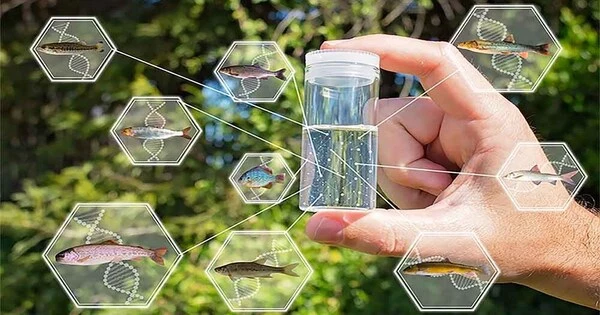DNA barcoding is a molecular biology approach that identifies species by utilizing a short standardized DNA sequence as a biological identifier. Fish DNA barcoding methods are used to identify groupings of fish based on DNA sequences found in specific sections of a genome. Because genetic material, in the form of environmental DNA (eDNA) or cells, is widely disseminated in the water, these methods can be utilized to research fish. This method is very beneficial for identifying fish species since it allows for quick and accurate species identification.
Researchers can identify which species are present in a body of water by collecting a water sample, extracting DNA from the sample, and isolating DNA sequences specific to the species of interest. Barcoding technologies can also be used for biomonitoring and food safety validation, animal nutrition evaluation, food web and species distribution assessment, and invasive species detection. A portion of the mitochondrial cytochrome c oxidase subunit I (COI) gene is the most often used DNA barcode for animals, including fish.
Barcoding can be used as an alternative to traditional sampling methods in fish research. Barcoding procedures can frequently give information without causing harm to the animal being investigated.
The features of aquatic environments influence how genetic material from organisms is dispersed. Because DNA material diffuses quickly in aquatic environments, it is possible to discover species from a vast area when sampling a specific location. Because DNA degrades quickly in aquatic environments, discovered species represent current occurrence without misleading signals from the past.
Here’s an overview of the DNA barcoding methods for fish:
- Sample Collection: Collect a small tissue sample from the fish. Fin clips, muscle tissue, or scales are often used. Preserve the sample in a buffer solution or ethanol to prevent DNA degradation.
- DNA Extraction: Isolate DNA from the collected tissue sample using standard DNA extraction methods. Various commercial DNA extraction kits are available for this purpose.
- PCR Amplification: Use polymerase chain reaction (PCR) to selectively amplify the target region of the COI gene. For fish barcoding, a segment approximately 650 base pairs in length is typically amplified.
- DNA Sequencing: Sequence the amplified DNA using DNA sequencing techniques. High-throughput sequencing platforms can be employed for processing multiple samples simultaneously.
- Data Analysis: Compare the acquired DNA sequences to a database of known COI sequences from various fish species. To match the resulting sequence to sequences in public databases, bioinformatics techniques such as BLAST (Basic Local Alignment Search Tool) can be employed.
- Species Identification: Identify the fish species based on the comparison results by identifying the closest match or resemblance to known sequences in the database.
- Quality Control: Implement quality control methods to verify that the DNA barcoding results are accurate and reliable. Duplicate analyses and validation using various genetic markers may be included.
DNA barcoding has shown to be a very useful tool in fisheries management, biodiversity research, and the identification of seafood fraud. It enables fast and accurate identification of fish species, even when traditional physical traits are difficult to distinguish.















